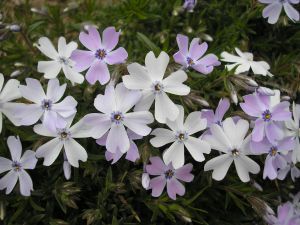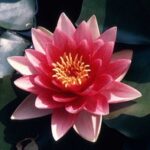Gardeners are often mystified about what to do with the shady places in the landscape. Landscapes with a lot of beautiful, valuable trees and shrubs often also have a lot of shade that makes growing flowers challenging, but not impossible.
A woodland garden may simulate the look of a wild forest, Romantic willowy flowers sit gracefully under trees, in harmony with the grass and wild plants. Woodland gardens can fill the landscape next to the house, surrounding the patio or deck, around the fish pond or under trees and shrubs. Wildflowers add a charming, artistic look to the yard and garden.
Plant a romantic, old fashioned woodland garden, with native plants. Woodland gardens have an informal look. Try planting wildflowers that are indigenous to the area. Wildflowers that are native to the area will have a great chance of growing successfully in the yard. The local garden center is a terrific place to get advice about which plants to purchase for a woodland garden. Remember that even shade tolerant plants also need some sun, preferably morning sun or all day dappled shade.
For information about which plants are native to a particular area, there are books written about wildflowers. Wildflowers in Your Garden” by Vicki Ferrenica ((1991) and “The New England Wild Flower Society Guide to Growing and Propagating Wildflowers of the United States and Canada” written by Bill Collins (2000).
There are plants that work well in most areas. Ferns are a great addition to the woodland garden. Flowers that enhance a woodland garden just about anywhere include:
Astilbe: great shade plant. dainty blooms rise above interesting clumps of foliage of dark green to bronze. Flower colors include white, pink, red and reddish purple. Astilbes bloom from early to late summer.
Bergenias: Great foliage plant with large flower heads in mid spring.
Columbines: Hardy perennials found wild throughout North America. Unusual funnel shaped flowers are bell shaped with short spurs. The flowers are borne on long slender stems.
Coral Bells: Airy stems of cloud like flowers rise above foliage of green to bronze.
Corydalis
Epimediums/Barronworts
Fairy Bells: Tiny bell shaped flowers.
Foam Flowers; Tiny white flowers in cluster that resemble foam.
Foxgloves: Stately stems with clumps of tubular flowers in a various colors.
Fringed Bleeding Heart; Graceful clusters of cherry red buds in delicate clusters. Great shade plant.
Hostas: There are many different Hosta cultivars, with spike shaped foliage with slender stems bearing delicate blooms. Terrific shad plant.
Lady’s Mantle: Lime green leaves with dainty star shaped flowers. This flower has graced gardens since the 16th century.
Lenten Rose: Flowers range in color from pure white to deep plum. withe in-between shades of pink, rose, magenta, cream, pale yellow or green.
Ligularias
Lily -of-the-Valley: Glossy spike shaped leaves with fragrant delicate stems of bell shaped flowers in the spring.
Lungwort: Stem bears egg shaped leaves.
Phlox: Fragrant clusters of blooms in a variety of colors.
Primroses: Early spring blooms come in the color on the rainbow.
Rodgersias: Large leaves tinted with bronze with small white flowers.
Snakeroots
Solomon’s Seal: Close relative to the Lily-of-the-Valley.
Sweet Woodruff; Mat forming perennial often used as ground cover.
Toad Lilies: There are several varieties of this pretty flower.
Violets: Springtime bloomers with flower of white, violet and yellow.
Yellow Wax Bells: The plant has light green maple-like leaves and funnel shaped flowers that bloom in late summer.
Resources:
Burpee, The Complete Flower Gardener, The Comprehensive Guide to Growing Flowers Organically, by Karan Davis Cutler and Barbara W. Ellis.




